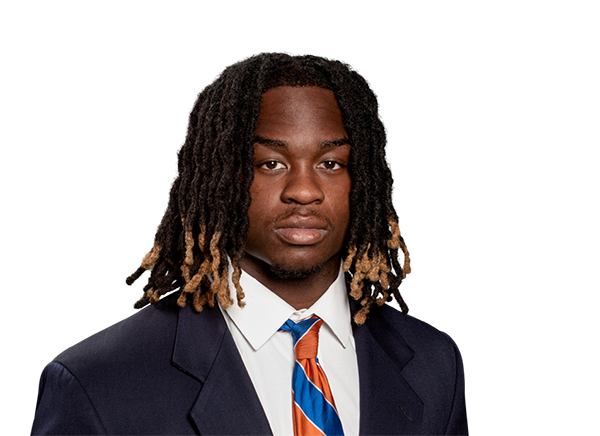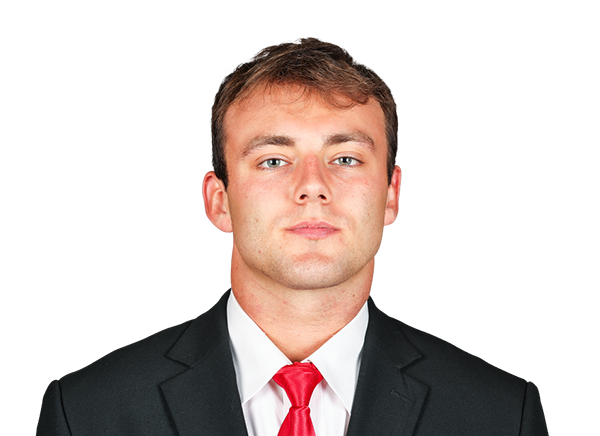Rookie hype season is starting to get into full swing. The NFL combine showcases the top talent coming into the league. NFL general managers are plotting moves they can make to find the talent they want in the draft. And dynasty owners are trying to collect draft picks for their rookie drafts to inject some youth into their teams.
While all this excitement around rookies is fun, I have noticed in recent years that the hype around players often leads to owners buying into lottery odds. They believe their picks have greatness in their destiny instead of taking advantage of the hype in another way. Specifically, I see this with teams with a contending base on their roster that need just one or two more moves to become a top threat.
While having young talent on your team is always advantageous, it is not always the most cost-effective way to improve your roster, especially at the running back position. Come along with me as I showcase why youth is disproportionately skewing the value of running backs in dynasty football.
Youth is Wasted on the Young
There is no denying that having a younger premier player is always better than having an older one. Extra years of life left in the tank for players on your roster increases value and fills a position of need longer. There is nothing surprising about that fact.
But, we often see players propped up as more valuable than others based on prospect and youth alone. We rank unproven running backs and hold their worth to a higher standard than successful backs, with the biggest factors being their age and the chances they “break out” in the future.
Year after year, late first-round picks and early second-round picks are spent on running backs that owners believe will get opportunities within their offenses and showcase their talent. And every so often, we see one of these players become a home run for an owner.
But more often than not, we get a collection of busts and wasted picks. We prop up the idea of a player and make that more valuable than the actual success of other players, especially when it comes to the second tiers of talent in rookie drafts.
Premier Picks Not the Issue
Before I go much further, I have to stop and make sure you understand the major difference in rookie running backs in drafts. Unsurprisingly, backs with higher draft capital tend to be better prospects with better careers. This isn’t rocket science.
However, do you realize how successful these backs typically end up being? Let’s take a look at every running back that had an ADP in the first four picks of rookie drafts from 2015 to 2022:

In 83 combined active years for running backs picked between 1.01 and 1.04, they produced 36 RB1 seasons. 43.4% of the seasons were in the top-12 for running backs that year. Add RB2 seasons, and you have 55 seasons to hit the threshold or 66.3%.
Basically, if you are drafting a running back seen as a talent worthy of a top-4 pick in a rookie draft, that player can help you early and often. This is an incredibly impactful player for several years for your team.
The Second Tier
While those top talents are exceptional pieces to have on your teams, the point of this article is not that the best prospects do, in fact, become good players. I am really trying to dive into the use of draft picks at your disposal when you are trying to become a championship team.
If you pick outside the top-4, you were a contending team last season. You were either in the playoffs or one of the first two teams out in a 12-team league. Finding one or two more difference-makers can be the difference between being good and being great.
You are sitting with a mid/late first-round pick and may think that difference maker is available in the draft. You can kill two birds with one stone and get a player to help you this year while having more youth on your team.
Well, once again, let’s look at the probability of that panning out for your team:

That’s a pretty drastic difference. There were 107 combined running back seasons for backs picked between 1.05 and 1.12 since 2015. Of those 107 seasons, only 14 resulted in an RB1 year, accumulated by only four different backs. That’s 13%. Adding RB2 years, we see 29 seasons in the top-24 or 27.1%.
Going further, Kareem Hunt is the only running back since 2015 with an ADP between 1.08 and 1.12 to produce an RB1 season. That’s 14 running backs since 2015 drafted between 1.08 and 1.12, with only one producing at an RB1 level and only five producing at an RB2 level for at least one year.
Yet, every year we see backs drafted in this range. Every year, teams that were in the playoffs or just outside of them are investing picks in these backs. Obviously, some of these picks are now with other teams. But there is a large, non-zero number of owners drafting the second tier of rookie running backs when their team is ready to win now.
The Exceptional Alternatives
I’ve tried to establish here that, at least when it comes to running backs, rookies aren’t the best investment once you get outside the top few prospects. Whether you agree with this conclusion is up to you.
But if you need a running back for the upcoming season, what is your alternative when it comes to those mid/late first-round picks?
Well, every year, owners start to sell their backs earlier and earlier in their careers. Fears of losing all value force impatient managers to ship off their top running back talent to get some lottery picks in return. And the talent we are talking about isn’t some late RB2 or early RB3. We are talking about premier players.
Let’s look at four running backs: Nick Chubb, Josh Jacobs, Joe Mixon, and Derrick Henry. These backs have several factors in common. They are all between the ages of 25 and 29. They have all been in the league for at least four years. Each back has had at least two RB1 seasons. And they were all in the top-12 RBs in 2022 (Jacobs RB3, Henry RB4, Chubb RB5, and Mixon RB12).
Maybe most importantly, all of them have recently been in trades for the price of one first-round pick or less:

Now, league to league, there can be different circumstances for a single deal. But all four of these backs have multiple examples of their trade value being around a first-round pick or less. Our trade browser does not tell us exactly where the picks land in a given round. But, likely, most of these first-rounders are outside the top-4 picks in rookie drafts.
All these backs will be a year older next year. Henry is 29 now. So, the time you have left for these players to produce at a high level is winding down. But the probability of them producing at a high level for at least one more year is arguably much higher than the odds of a second-tier rookie running back hitting.
As shown above, a running back taken between picks 1.05 and 1.12 only has an RB1 season 13% of the time. Chubb, Jacobs, Mixon, and Henry have hit RB1 years 12 of their combined 22 seasons. This includes RB1 seasons 9 of their last 12 combined years.
Summary
If you are a contending team, you are doing yourself a disservice if you completely avoid veteran running backs. Yes, these backs have less of a lifespan left. But they are proven commodities that have won ships for many owners in the past. And they can continue to do so in 2023.
Ultimately, we play fantasy football for one reason: to win championships. For some, building through youth is the only way they want to add talent to their team. But I have news for you. A championship three years from now is worth just as much as a championship next year. One ring. One banner.
This is not to say you should have no youth on your roster. I’m not asking you to sell off all draft picks for veteran players every season. But you cannot win a league without blue-chip players in at least a few spots on your roster. You cannot outscore other teams in the playoffs without having good talent at every position. And you can’t know what you are getting with a lottery ticket compared to a known commodity.
Even amongst the top-4, you never truly know what you are getting. A year ago, D’Andre Swift was drafted at an ADP of RB3 overall. Javonte Williams was RB5. Both were young, with RB2 years under their belt. If they broke out, they would be young and a top back in the league. A year later, KeepTradeCut has Javonte listed as RB9 and Swift as RB13. A year older and still yet to reach the RB1 numbers that were expected.
When it comes to running backs, they are the most volatile position with the shortest shelf life in football. Don’t get caught up with youth being the most essential factor. It certainly plays a role, but talent trumps everything. And with how affordable some veteran running backs are, your picks can often be utilized to a greater extent in a deal for a proven back.



















2 Responses
Thanks for the comment, Jake! I feel for you on that. I have had similar instances in the past and learned my lesson the hard way as well. Ultimately, our goal is to maximize the value of those picks and play the odds/percentages to our favor. An aging, but reliable back can often times be a lot better/safer option than an unproven/second tier rookie. Good luck in your offseason!
Good read! I had one year where I needed RB help BAD as a contender. Instead of giving up a 1 for a Derrick Henry or Aaron Jones (owner was willing to sell for that price), I traded up to take Michael Carter at 1.6. I lost a draft pick and he’s not even on my team anymore.